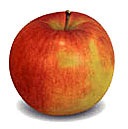 Washington leads the nation in organic apple, pear and cherry acreage, primarily in the central, irrigated regions of the state.
Washington leads the nation in organic apple, pear and cherry acreage, primarily in the central, irrigated regions of the state.
For the first time in several years, however, organic acres for apples and cherries declined in 2010 – 6% for apples and 12% for cherries. Organic pear acreage increased 4%.
According to the Washington state Department of Agriculture, the number of certified organic agricultural producers overall fell from 805 in 2008 to 753 this year. The number of certified organic acres declined from 118,405 to 104,540 during the same time. That leaves about 163 square miles of organic crops.
Much of the change in the apple acreage came from the withdrawal of older ranches that raise traditional varieties like Red Delicious, Golden Delicious, and Granny Smiths, from the organic program. As apple trees age and reach 20 to 25 years old, they produce fewer fruit. And older planting methods which placed larger trees further apart, generally yield about 500 bushels per acre. By moving those acres out of organic production, growers can boost production with conventional growing methods, including fertilizers.
According to Matt Miles, Organic Sales Representative for FirstFruits of Washington, trees that were planted 3 to 5 years ago under new high density methods – supported by trellises, closely spaced, and pruned to be “harvester friendly” – are now coming into full production. These new growing methods produce as many as 1500 bushels per acre. As a result the actual crop yields of Gala and Fuji apples – the most popular organic varieties – have increased, even though the overall acreage is down.
Will those “old” apple trees be replaced in the near future? Facing a tight economy and the natural risks of farming and ranching, it may be difficult for growers to upgrade them to new growing methods and back to organic production. At a cost of about $14,000 per acre to replant and 3 to 4 years without a harvest, the costs may just be too high.
